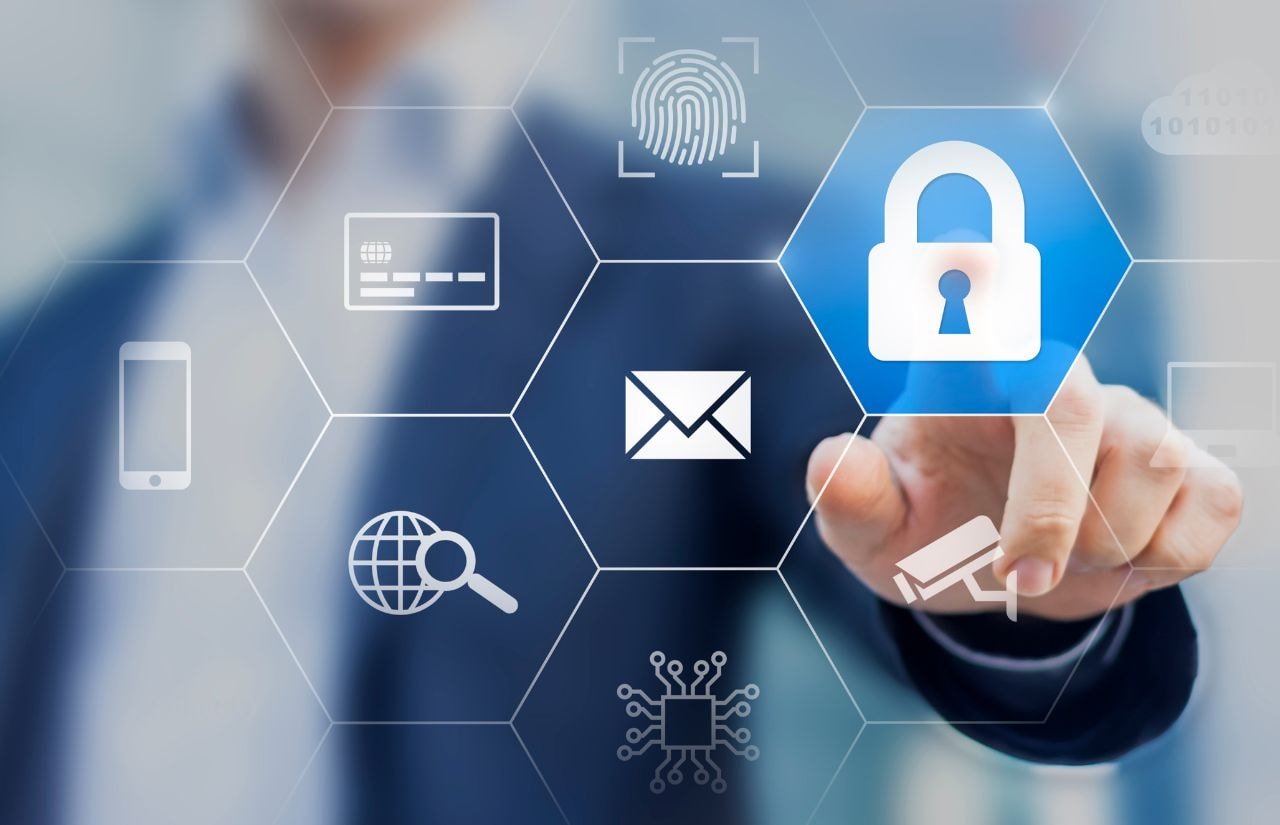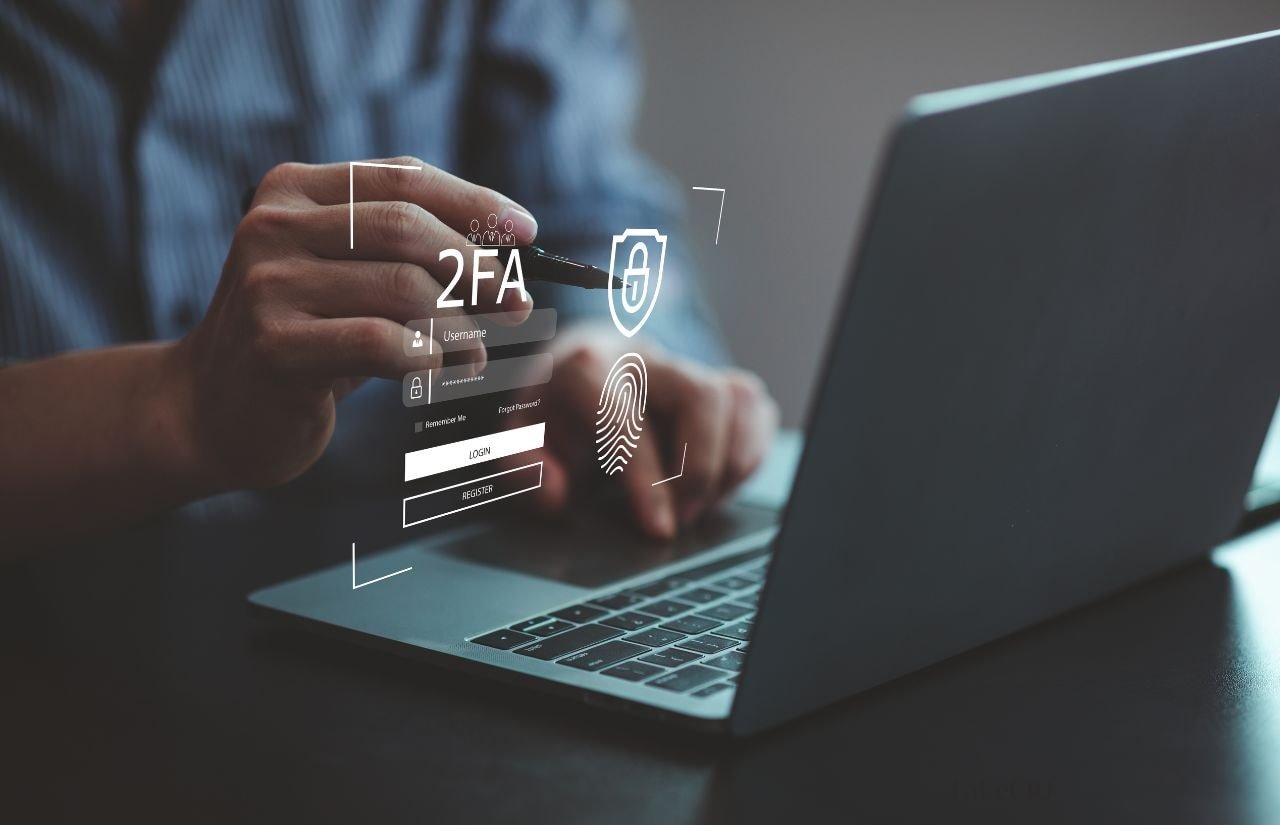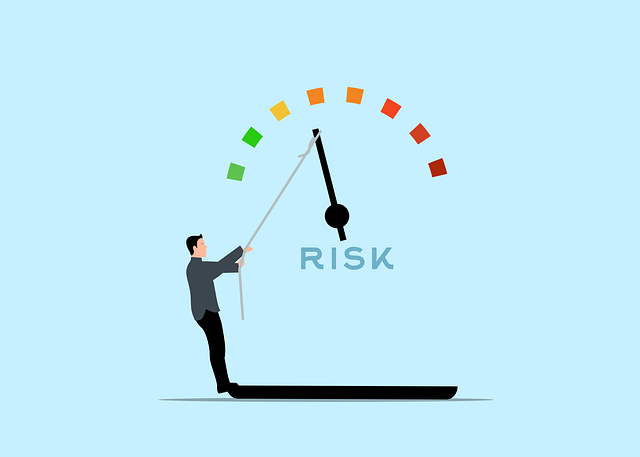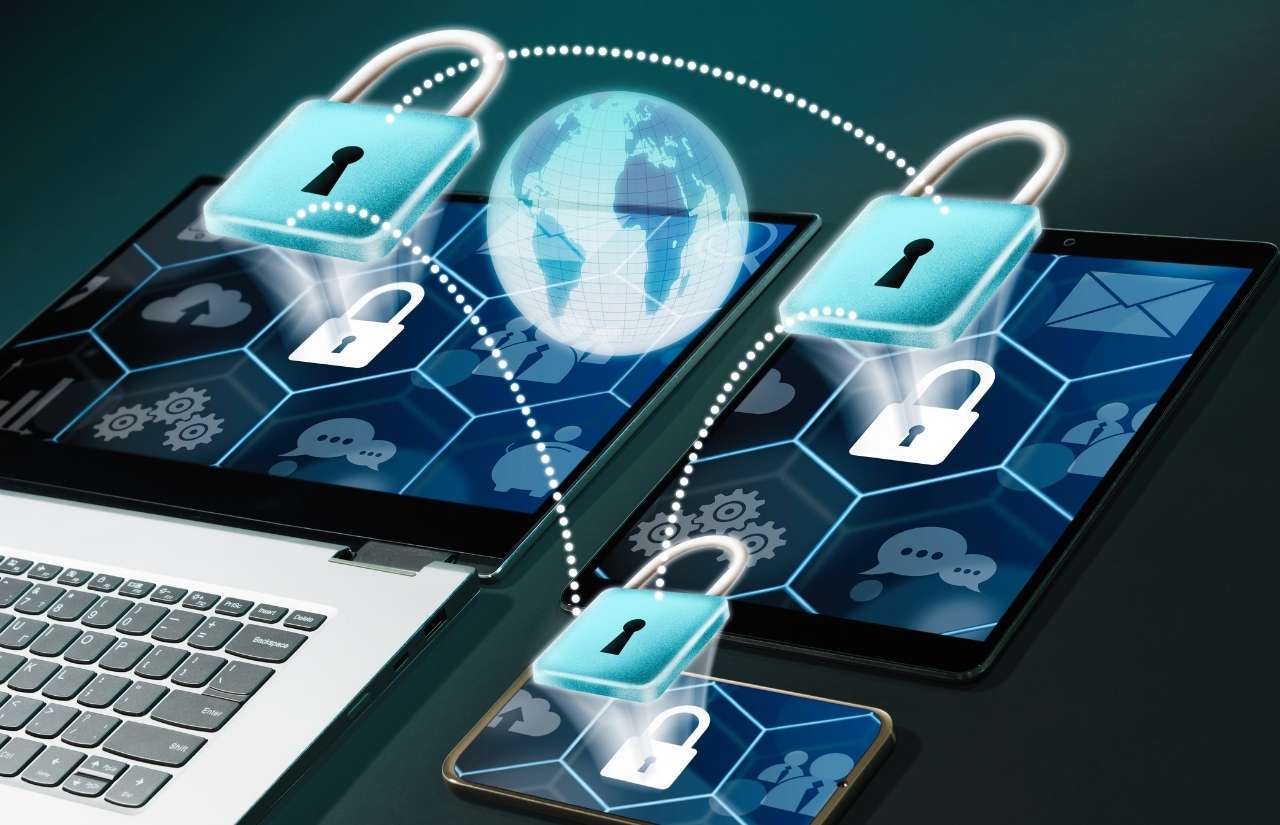Cyber threats are on the rise. To protect your business, understanding cybersecurity best practices is essential. This article covers key measures like creating a security policy, enhancing cloud security, and managing supply chain risks.
Key Takeaways
- Implementing a comprehensive cybersecurity strategy is crucial, incorporating employee training, regular audits, and incident response plans to mitigate cyber threats.
- Regularly updating security policies and utilizing strong passwords along with multi-factor authentication significantly enhance protection against unauthorized access.
- Continuous employee education and monitoring of third-party applications are essential for maintaining a culture of cybersecurity awareness and preventing potential data breaches.
Understanding Cybersecurity

The field of cybersecurity is dedicated to the protection of networks, computer systems, and devices from attacks by cybercriminals. In an era where internet-connected devices abound and hacking methods grow ever more complex, implementing strong cybersecurity practices has become increasingly indispensable. For businesses, sound cybersecurity is essential for warding off threats such as malware and phishing attempts which can lead to significant monetary demands for ransom payments as well as costly recovery processes. Breaches in data security have the potential to tarnish a company’s reputation through loss of consumer confidence and reduced commercial prospects.
The repercussions of a cybersecurity breach are far-reaching. They include legal penalties due to failure in adhering to regulations related to data privacy and interruptions that affect vital business functions, leading not only directly to financial deficits but also heightened exposure to Risks associated with cybersecurity.
Cybersecurity aims primarily at protecting sensitive personal information like health records, financial details or proprietary corporate secrets against illicit access or theft perpetrated digitally. Given the rampant incidence rate involving digital information theft today, it is imperative that organizations establish comprehensive strategies within their practice aimed at securing their crucial data effectively against these prevalent online threats.
Cybersecurity Best Practices for 2024

Businesses are required to adopt critical cybersecurity practices in order to defend against the continuously advancing cyber threats. By establishing such security measures, businesses can substantially improve their online defense systems and secure themselves from imminent cyber attacks. The development of an intricate cybersecurity strategy coupled with the execution of periodic assessments plays a vital role.
We will explore the core practices that should be put into place for ensuring your business’s protection come 2024.
Develop a Comprehensive Cybersecurity Strategy
An effective cybersecurity strategy is essential in protecting the operations of a business. This includes providing training to both employees and end-users, as well as conducting consistent audits that assess security preparedness and awareness. These audits produce comprehensive records which are valuable for analyzing incidents that may occur later.
Implementing an incident response plan is vital in controlling and lessening the effects of cyber attacks, which should be in accordance with principles of zero-trust. Incorporating biometric methods can also improve accountability regarding access and create a more robust audit trail.
It’s important to have a solid data protection policy that prescribes actions aligned with fundamental information security concepts, paramount for maintaining organizational safety.
Update Security Policies Regularly
Regular revisions of security policies are crucial to align them with advancements in technology and changing tactics. Employees should receive unambiguous guidance on security protocols from a comprehensive cybersecurity policy. Given the projection that 75% of people worldwide will be covered by data privacy regulations by 2024, it is vital to comply with these rules.
Educating employees about fundamental security practices, such as devising robust passwords and following policy compliance, is imperative for maintaining overall cybersecurity.
Backup Data and Install Security Updates
Strategically managing substantial data volumes necessitates consistent backups. It’s important to regularly save copies of vital information including documents, databases, financial records, HR details, and account files.
To maintain the integrity and accessibility of this data, weekly backups are advisable. Updating security software with the latest patches is essential in safeguarding against vulnerabilities that could be exploited.
Use Strong Passwords and Multi-Factor Authentication
Incorporating strong passwords that are distinctive, feature a variety of characters, and are routinely updated is crucial in diminishing the likelihood of unwarranted access. Adding an additional security dimension through multi-factor authentication demands several forms of verification to bolster this defense.
To forge a potent network security cybersecurity strategy, it’s imperative to integrate firewalls, encryption techniques alongside multi-factor authentication. These safeguards act as critical defenses ensuring that compromised passwords do not directly lead to unauthorized entry by establishing supplementary barricades against such risks.
Collaborate with IT Department
To manage cyber threats efficiently and devise customized cybersecurity strategies, it is essential for the active participation of the IT department to ensure alignment with both organizational requirements and industry benchmarks. Working hand in hand with IT is crucial for effective cybersecurity management.
Maintaining ongoing collaboration with the IT department strengthens security measures and promotes a culture within the organization’s systems that prioritizes awareness of security threats.
Conduct Regular Cybersecurity Audits
Regular audits are crucial for identifying vulnerabilities and ensuring compliance with security measures. They help organizations assess their security posture and pinpoint areas for improvement.
Advanced threat detection tools monitor user behavior for anomalies indicative of security breaches. Coupling regular audits with these tools strengthens a business’s defense against threats.
Control Access to Sensitive Information
Robust measures must be in place to shield sensitive data from unwarranted access. Adhering to the least privilege principle, which is a core tenet of Zero Trust architecture, reduces users’ access rights strictly to what is essential. Detailed policies for managing data should encompass strategies regarding how data is gathered and the control measures applied for accessing it.
Policies on managing such information ought to specify procedures that guarantee the integrity, confidentiality, and availability of sensitive data are maintained effectively as part of its protection strategy.
Monitor Third-Party Users and Applications
Closely observing the actions of third-party users and applications enables companies to identify and address potential data breaches promptly, thereby safeguarding against early stages of malicious activity.
Invest in Employee IT Training and Education
Consistent training of employees in the best practices for cybersecurity nurtures an environment steeped in vigilance and adherence to regulations. Such ongoing education improves the ability of a workforce to detect and respond effectively to possible security threats, heightening their aptitude for threat recognition and mitigation.
The persistent instruction in cybersecurity principles engenders an organizational culture that yields enduring benefits for the overall security posture of the organization.
Enhancing Cloud Security

Due to the unique needs of different providers and deployments, security measures in multi-cloud environments must be customized. Cloud infrastructures often become the focus of cyber threats. Hence, possessing sophisticated capabilities for detection and response is imperative.
It’s vital to employ robust encryption techniques when safeguarding data that is accessed remotely. By simplifying technology, we can diminish the potential points of attack, thereby making it more challenging for cyber attacks to breach our systems.
Implement Zero Trust Security Models
Continuous authentication is a cornerstone of Zero Trust models, which authenticate user identities and their devices prior to providing access. This verification process guarantees that only confirmed entities can reach sensitive data, thereby boosting the security measures in place.
By tracking distinctive behavioral patterns of users, behavioral biometrics significantly improve security protocols by identifying possible fraudulent activities.
Utilize Threat Detection and Response Tools
Tools for detecting and responding to threats play a pivotal role in promptly spotting suspicious activity and efficiently neutralizing cyber threats. These instruments equip organizations with the capabilities to uncover malicious activity quickly, allowing them to react immediately, safeguard sensitive data, and ensure operational continuity.
The incorporation of artificial intelligence into systems designed for threat detection bolsters their capacity to adapt to novel and changing threats. It is anticipated that there will be an upsurge in the adoption of cloud-based tools for threat detection and response, reflecting a trend towards more formidable cybersecurity solutions.
Securing IoT Devices and Perimeter

It is vital to regularly update the software on IoT devices in order to safeguard them from vulnerabilities and potential hacking attempts. To protect against attacks, it’s equally essential to modify any default passwords set on these devices, since simple or widely used passwords can leave them open for exploitation.
To bolster security, isolating IoT devices onto distinct networks helps minimize their exposure to sensitive data by restricting their access.
Employ Biometric Security Measures
Behavioral biometrics enhance security by analyzing distinctive user interactions to identify unusual behavior, thus providing swift authentication and secure management of access, as well as precise identification of employees through biometric security measures.
Simplify Technology Infrastructure
Optimizing the technology infrastructure can lead to cost savings, enhanced reaction times, and improved efficiency in security measures. An all-encompassing cybersecurity strategy should encompass detailed audits and be closely integrated with the objectives of the business.
By implementing stringent access controls, a business can effectively protect confidential data by ensuring only essential personnel have access. Continual training for employees on best practices in cybersecurity is vital to maintain a resilient technological framework.
Managing Supply Chain Risks

SMBs can be affected by supply chain vulnerabilities if partners face security breaches, emphasizing the need for robust cybersecurity measures. In 2024, cybersecurity specialists are expected to actively pursue new protective methods and risk management strategies for supply chains.
By 2025, software supply chain attack incidents are predicted to triple compared to 2021.
Enhance Data Protection and Management
It is essential to keep track of the actions taken by privileged and external users to guard against unauthorized access and potential breaches of sensitive data. By doing so, organizations can prevent the theft of critical information through meticulous monitoring.
Security policies should be detailed in a data protection strategy that adheres strictly to established principles regarding information security. The guidelines must clearly define procedures for handling data, including how it’s collected, who has permission to use it, where it is stored, and when it should be disposed of.
Linking users directly with security protocols via Identity and Access Management (IAM) helps mitigate risks associated with human mistakes that frequently lead to security compromises in protecting sensitive information.
Secure Remote Access
Monitoring remote workers, correctly setting up networks, and adhering to the least privilege rule—which restricts users’ permissions to only what is essential—help reduce security threats by preventing unauthorized access.
To detect abnormal actions and potential intrusions when employees work remotely, it’s important to routinely check audit logs. Ensuring compliance with established security protocols is key for preserving secure connections in a remote environment.
Leveraging Government and Industry Resources
The FCC re-launched the Small Business Cyber Planner 2.0 to help small businesses create tailored cybersecurity strategies. Additional cybersecurity resources include a one-page Cybersecurity Tip Sheet for quick guidance. Small businesses can access educational resources and tools from government agencies and private organizations to strengthen their cybersecurity measures.
Cybersecurity spending is expected to reach $10.5 trillion by 2025 as organizations respond to evolving threats. Leaders are prompted to increase security spending due to changing regulations and frequent cyber attacks. Leveraging government and industry resources is essential for enhancing cybersecurity resilience and preparedness.
Compliance with Stricter Regulations
Remaining up-to-date with cybersecurity legislation is essential for safeguarding confidential data and steering clear of legal complications. Adhering to these standards is crucial not only for the protection of information, but also in sustaining the confidence of stakeholders.
With predictions that 75% of the world’s population will have their personal data protected by privacy laws by 2024, ensuring compliance becomes increasingly imperative.
Summary
As the year 2024 progresses, it’s vital to emphasize that strong cybersecurity practices are essential. Crafting an all-encompassing cybersecurity strategy and tapping into resources provided by both government entities and industry experts is a crucial aspect of defending your business from the continuously changing cyber threats. Keeping security policies current, conducting routine audits in cybersecurity, and dedicating resources to ongoing training for employees remain key elements in upholding a robust defensive stance.
Protecting your business data and operations is not a one-time event, but rather a persistent endeavor. By adopting these best practices for security, you effectively shield your information technology environment while establishing an adaptive defense mechanism prepared for forthcoming obstacles. Cybersecurity demands collective diligence, forward-thinking actions, and dedication to staying abreast with pertinent developments. Let this approach transform potential weaknesses into fortified aspects of your enterprise’s digital presence.
Frequently Asked Questions
How our vCIO and vCISO services can help?
Our vCIO and vCISO services provide comprehensive support in strengthening your organization’s cybersecurity posture. The vCIO helps align your IT infrastructure with business goals, ensuring that your technology strategy includes robust security measures. Meanwhile, the vCISO focuses on creating and implementing a tailored cybersecurity framework, addressing key areas like risk management, data protection, and incident response. Both services work together to proactively identify vulnerabilities, monitor threats, and ensure compliance with evolving regulations.
By leveraging our vCIO and vCISO expertise, your business gains access to seasoned professionals who can oversee security audits, implement best practices like multi-factor authentication, and educate employees on cybersecurity awareness. This combination of strategic IT leadership and security management ensures your company is protected against the latest cyber threats while maintaining operational resilience.
Why is developing a comprehensive cybersecurity strategy important?
Crafting an all-encompassing cybersecurity strategy is vital for the protection of your business from a range of cyber threats. It also maintains operational continuity by tackling essential security aspects, including staff education and procedures for responding to incidents.
Such a forward-thinking stance significantly bolsters your company’s ability to withstand likely cyber occurrences, thereby strengthening its overall resilience.
How often should we update our security policies?
Updating your security policies regularly is essential to stay effective against new threats and evolving technology. Aim for at least an annual review, or more frequently if there are significant changes in your organization or the threat landscape.
What are the benefits of using multi-factor authentication?
Using multi-factor authentication greatly enhances security by adding additional verification steps, significantly lowering the risk of unauthorized access even if your password is breached.
Implementing this method is a crucial step in protecting your sensitive information.
Why is monitoring third-party users and applications important?
It is crucial to keep a vigilant watch over third-party users and applications in order to protect against data breaches and block any unauthorized access, thus ensuring the security of your organization’s sensitive information.
How can leveraging government and industry resources enhance our cybersecurity?
By tapping into both industry and government resources, you can greatly improve your organization’s cybersecurity posture. These resources grant you entry to critical learning tools, key guidelines, and monetary aid.
Such a step guarantees that your organization is constantly updated on the most recent developments and regulatory requirements in the realm of security, thereby bolstering its defense mechanisms substantially.
